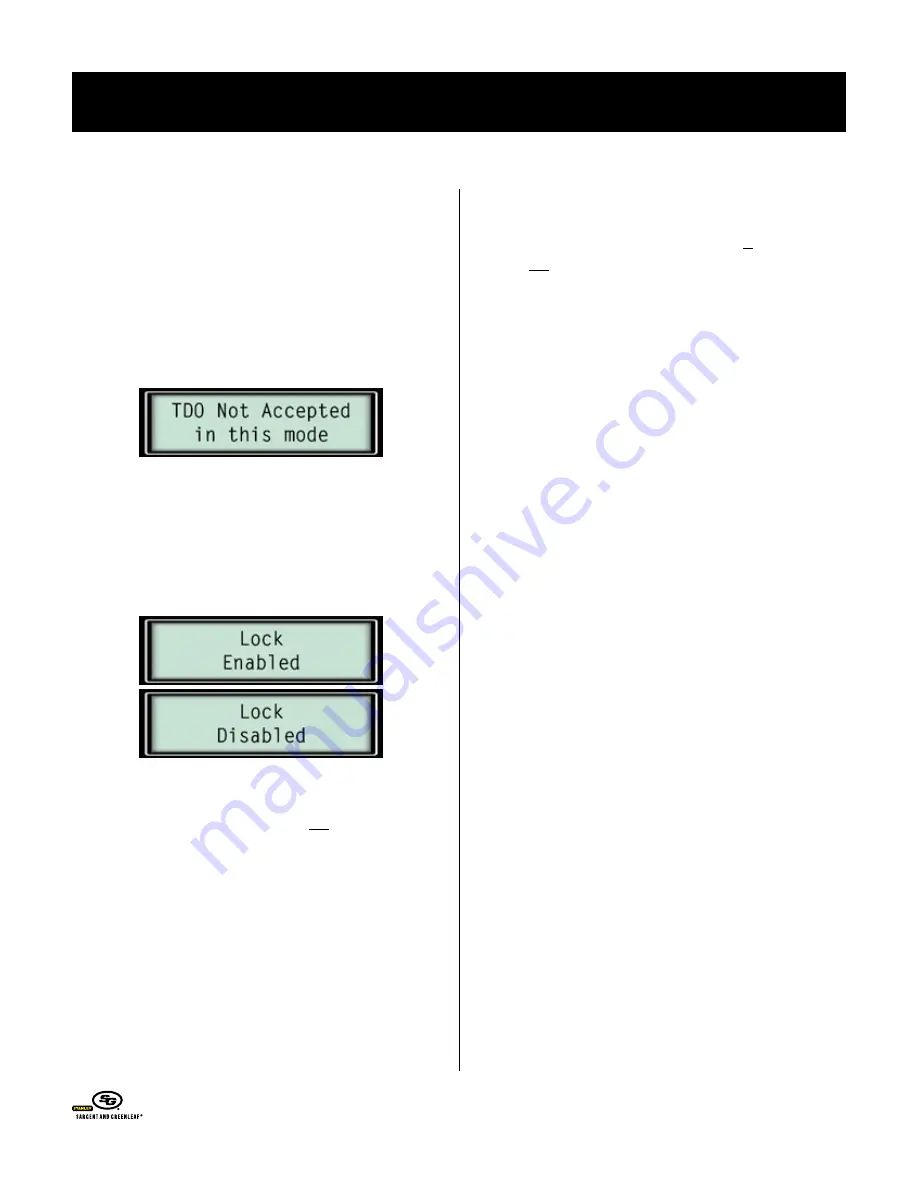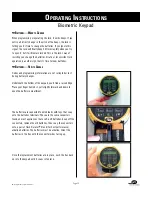
➥
t
o
o
pen
the
L
ocK
In
s
upervIsor
/s
ubordInate
M
ode
If your lock is a model 6123 or Z
02
, it is capable of supervisor/
subordinate mode. In this mode, the master and supervisor codes
(PIN positions 1 and 2) cannot open the lock directly. Instead, they
are used to toggle the lock on and off for operation by the holders of
user codes (PIN positions 3 through 7). Note that time delay override
does not work when the lock is in supervisor/subordinate mode. If
you enter it, the lock will display:
When you enter a master code (#1) or a supervisor code (#2), the
lock’s LCD will indicate whether the lock is toggled on or off for
opening by the user codes (#3, #4, #5, #6, #7). Entering either the
master code or the user code, or using the fingerprint associated
with either one of these codes, will toggle the lock from its present
state to the opposite state (ie. lock enabled or lock disabled).
When the lock is enabled, it can be unlocked by any of the user
codes in PIN positions 3 through 7. The keypad can be set for
operation by fingerprint, PIN, or fingerprint and PIN in supervisor/
subordinate mode.
➥
t
o
o
pen
the
L
ocK
u
sIng
t
IMe
d
eLay
o
verrIde
If your lock is a model 6123 or Z
02
, it is capable of time delay
override in the single user and dual control modes. TDO (time delay
override) provides a code (stored in the #9 PIN position), which can
open the lock without waiting for the time delay to finish. TDO is
desirable in situations where a time delay is used to deter armed
robbery, yet armored car couriers need instant access to the safe
for pickups. It only works when a time delay is set in the lock, and it
can function in two different ways.
The first is single control. After pressing START, simply enter the
TDO fingerprint and/or PIN code to open the lock, depending on
whether the keypad is programmed for fingerprint or code access, or
fingerprint and code access. The time delay never starts.
The second is dual control time delay override. Press START, then
enter a valid fingerprint and/or PIN code to start the time delay.
Once it has started, enter the TDO fingerprint and/or PIN code to
open the lock immediately.
➥
I
n
c
ase
of
t
roubLe
If your lock should fail to open when a valid code is entered,
check for the following:
1. The boltwork of a safe can, under certain conditions, place
pressure on the side of the lock’s bolt. This is often caused
by something inside the safe pressing against the door or by
something caught between the safe door and its frame. When
this occurs, the lock will not operate properly. To relieve side
pressure on the lock bolt, move the safe’s handle to the fully
locked position, then re-enter a working code. The lock should
release.
2. If the lock beeps when keys are pressed, but it will not open,
the batteries may be drained to the point that they will not
operate the lock’s mechanical components. Follow the battery
replacement procedure in this manual. Low battery condition
can also be detected by the beeps emitted from the lock.
The lock emits a lower frequency tone when batteries are
low. This lower tone is only emitted when a keypad button is
pressed, not when a fingerprint is used.
3. If the lock makes no sound when any of the keys are
pressed, or the LCD screen doesn’t display any information,
dead batteries are likely to be the cause. Follow the battery
replacement procedure in this manual.
o
Perating
i
nstructions
Biometric Keypad
© Copyright 2005, Sargent & Greenleaf
Page 4





































